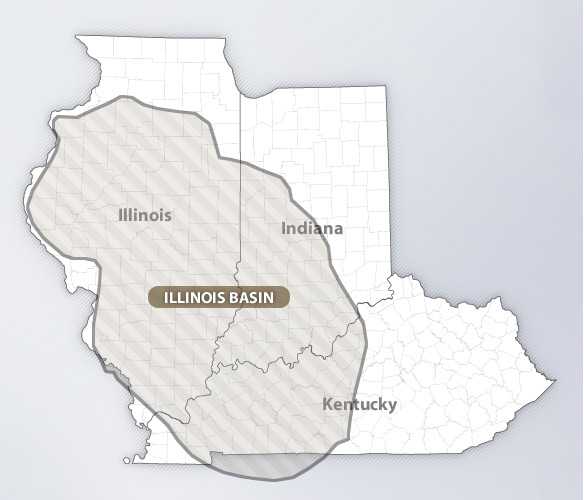
Illinois Basin

The Illinois basin is an oval depression covering approximately 60,000 mi2 (155,000 km2) in the U.S. Mid-Continent. The basin contains rocks consisting primarily of marine carbonates and, to a lesser extent, sandstone, shale, and siltstone.
The basin began as a failed rift. After the rifting episode, the basin began to form, initially by thermal subsidence (Late Cambrian through Middle Ordovician), as a thick succession of sandstone and carbonate rocks. Compressional stress apparently led to a decrease in the viscosity of the lithosphere, allowing the uncompensated load to subside more rapidly. Parts of the six primary stratigraphic sequences spanning are represented in the basin. From oldest to youngest, these include the Sauk, Tippecanoe, Kaskaskia, Absaroka, Zuni, and Tejas sequences. All are separated by major unconformities, especially on the flanks of the basin, and all represent major tectonic episodes in basin evolution.
Since the initial discovery in 1886, approximately 4 billion bbl of oil and an estimated 4 trillion ft3 of associated dissolved natural gas has been produced in the Illinois basin. Most petroleum in the basin has been produced from major anticlinal structures with stratigraphic trapping components. Oil and source rock analyses indicate that the New Albany Shale was the primary source of hydrocarbons in the Illinois basin; however, mixing of oils from older sources is probable. Long-distance migration of New Albany oil occurred in the basin.
Potential exists for increased reserves in the Illinois basin as a result of (1) strategic infill drilling to find bypassed mobile oil, estimated at more than 1 billion bbl; (2) secondary and tertiary methods to recover immobile oil, estimated at more than 4 billion bbl; (3) exploration for subtle traps; and (4) deep drilling into the thick, lesser known Cambro-Ordovician section.